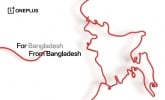Consequences of high population density in Bangladesh

Bangladesh is one of the most populous country in the world, with a population of approximately 16.2 Crore(Source: Internet).Bangladesh may not be able to get the benefit of demographic dividend. Rather if population cannot be propely utilized it may be population bomb.Out of around 200 countries in the world our country ranks 8. But even worse than this is the case of population density. The top 5 countries are aamong the biggest countries in the world. China, USA, Brazil, India and Indonesia are the 2nd, 4th, 5th, 7th and 14th biggest countries in te world respectively, accumulated to support such a huge population. Bangladesh according to size is only the 92nd! The population of Bangladesh has more than doubled from 7.6 Crore in 1974 to 16.2 Crore in 2017. Pakistan and Nigeria are 3 times are larger than Bangladesh. Infact our small country has a bigger population than the biggest country in the world Russia, here is a comparison between Russia and Bangladesh in size:
(Source:Internet)
It is astonishing and outrageous to imagine that the small green region (our own country) has a bigger population than the orange region, the biggest country in the world (Russia)! This means only one thing, Bangladesh has a large population for a very small area, and is the most densely populated country in the world. The table below compares the top 10 most densely populated countries in the world, and our country unfortunately ranks no 1:
|
Pos. |
Country (or dependent territory) |
Area (km2) |
Area (mi2) |
Population |
Density (pop./km2) |
Density (pop./mi2) |
Date |
Population source |
|---|---|---|---|---|---|---|---|---|
|
1 |
143,998 |
55,598 |
162,695,286 |
1,730 |
2,926 |
June 28, 2017 |
||
|
2 |
36,191 |
13,973 |
23,545,680 |
650 |
1,683 |
March 31, 2017 |
||
|
3 |
100,210 |
38,691 |
51,446,201 |
513 |
1,329 |
July 1, 2017 |
||
|
4 |
25,314 |
9,774 |
11,809,295 |
467 |
1,210 |
July 1, 2017 |
||
|
5 |
27,065 |
10,450 |
11,244,774 |
415 |
1,075 |
July 1, 2017 |
||
|
6 |
41,526 |
16,033 |
17,133,408 |
413 |
1,069 |
June 28, 2017 |
||
|
7 |
27,816 |
10,740 |
10,400,938 |
410 |
1,062 |
July 1, 2017 |
||
|
8 |
3,287,240 |
1,269,211 |
1,317,829,956 |
401 |
1,038 |
June 28, 2017 |
||
|
9 |
22,072 |
8,522 |
8,707,840 |
395 |
1,022 |
June 28, 2017 |
||
|
10 |
30,528 |
11,787 |
11,358,952 |
372 |
963 |
April 1, 2017 |
Whereas India has a population density of 401 people/sq km, Bangladesh has nearly the 3 times, of nearly 1200 people/sq km. The case is far worse when we compare cities. Due to rural lo urban migration many people are coming to Dhaka, the capital city of Bangladesh to earn a better living. Thus Dhaka is one of the populated and congested cities in the world. The table below shows Dhaka’s position in terms of most densely populated and congested cities of the world and Dhaka has a population density of over 7000 people/ sq km:
|
1.Manila |
1,780,148[1] |
16.55 |
41,515 |
107,562 |
||
|
2. Mumbai |
12,478,447[5] |
437.71[6] |
169 |
28,508 |
73,837 |
|
|
3. Dhaka |
8,523,137[7] |
300.0[8] |
115.83 |
28,410 |
73,583 |
(Source:Internet)
This is most evident in Dhaka’s ever increasing traffic congestion. On a personal experience, at an average day it takes over 2 hours (sometimes even 3 hours0 to go from Dhanmondi to Gulshan, due to the severity of the traffic jams, whereas covering the same distance in Calcutta, India takes around 10 minutes, even in the busiest days. Dhaka is slowly overtaking Mumbi, the most densly populated city of India. As more people migrate to Dhaka City, and buy new cars, the situation is getting worse day by day and it is one of the most important factor that has been used to name Dhaka as the 2nd most unlivable city in the world.
Traffic Jams in Dhaka City.
Traffic Jams is one of the most severe impact of the high population density but it is not the only impact. There are several other impacts of over population in Bangladesh, but first lets identify the causes and do a cause and effect analysis:
Causes of High population Density in Bangladesh:
- High birth rate in the 1970s, 80s and 90s and lack of family planning measures during that period (1972-1999).
- Partition of Bengal in 1947. Bangladesh became one of the smallest countries in the world after losing the entire region of West Bengal to India.
- Illiteracy: A large number of people in Bangladesh are illiterate. Because of it they are not aware about the affects of increasing of population. They take many children in their married life.
- Social & Religious superstition: Social and religious superstition are the major causes of over population in rural areas
- Early marriage & polygamous: From many years early marriage and polygamous are practicing in rural society in Bangladesh which is very responsible to increase population.
- Poverty: Large numbers of people in Bangladesh are living under poverty line. They are deprived from many opportunities of life. They have need for money. They believe, more children earn more money. So they procreate more children in their married life.
- Agricultural economics: Bangladesh is an agricultural country. Economics of Bangladesh depends on agriculture. For helping in agricultural activities farmers take more children. For this reason the increasing rate of population is increasing.
Effects of High Population Density of Bangladesh:
- Traffic Congestion: As I already mentioned this is the most evident and visible.
- Food problem: In consistence with the theory of famous economist Thomas Malthus, Population in Bangladesh is increasing by geometrical progression. But the agricultural production is increasing by arithmetical progression. The production of food cannot keep pace with our increasing people. So this will cause ashortage of food in our country. Every year a large quantity of food is to be imported from abroad.
- Communication problem: there are crowds everywhere in buses, trains, bazaars, schools, colleges etc. People climb on the roof of the buses and trains to travel one to another as there is no room inside. This causes the accident.
- Educational problem: It creates educational problem too. It is a big job to get admission in school and colleges. For twenty seats, there may be two thousand candidates.
- Unemployment:In the field of employment this condition is hazardous. For one single vacant post there will be thousand candidates. Thousands and thousands of people are out of work in the country.
- Shelter problem:The area of Bangladesh is too small to arrange shelter for the large number of population. In our country some people sleep under the open sky, under the large tree, at railway station.
- Health problem:Health is wealth, but our people are suffering
- from many diseases. Many children of our country are blind because they do not get enough nutrition. Our children often suffer in diarrhea.
- Environmental pollution: The increasing people pollute our environment by making latrines on the bank of rivers and canals. Human waste pollutes our environments. The vast population also produces so much carbon-dioxide which is danger for the environment.
The current government is taking some strong measures to cut down the overpopulation of Bangladesh through various programs such as:
- Family Planning (no more than 2 children)
- Education for the underprivileged
- Awareness through advertisements and other media about the ill effects of overpopulation
- Stopping Early Marriage
- Higher household taxes
But despite these measures the population growth rate of Bangladesh is around 1.60%, in comparison, an European country like Belgium have rates like -0.05%. The 1.60% rate has been achieved after many years, and although the population growth rate has slowed, this does not mean the population will be declining and a negative population growth seems unachievable before 2050. This means by 2050, the number of senior citizens would increase, and we will be low on working age people. This problem would have no arisen if these steps were taken much earlier in the 70s or 80s. But now this scenario seems inevitable. China had implemented some radical population control policies like its one child policy since the 1970s and has had remarkable success. Slowly their population is projected to be lower than India’s despite the fact China is the 2nd largest country in the world and has one of the lowest population densities in the world. Moreover they recently abandoned the one child policy law in 2014, and took a two child policy as they have already achieved their targets, and also so that they do not have to face the consequence of a higher senior citizen population for a lower working class population. Despite that they still have radical laws, like to have more than one children people gave to donate blood, will receive fewer privileges and have to pay higher tax and more. China has also the highest number of death penalties in the world, executing over 1000 prisoners each year. If only such radical policies were strongly implemented and practiced in Bangladesh, the situation may not have been as terrible as it is today. Even if Bangladesh were to have a higher population of working class people, due to the large population it will be difficult if not impossible to provide them all education and training, and there will be a serious shortage of job and a massive unemployment.
Bangladesh is described as a role model for its success in economic development, and fulfilling goals like the MDGs and SDGs. But despite all this, the inevitable adverse effects of high population density will hold Bangladesh back, and if the present scenario persists and no proper step is taken to stop the progress of the high population density, than the economy by 2050 will most likely inevitably collapse. Following China’s example I have two radical recommendations to avoid this crisis and achieve a better Bangladesh:
- Implement a one child policy like China, and by default those who violate it should be taken to jail or have to pay fine for the rest of the life and have one of their children forcibly taken away to government custody.
- Increase the number of capital punishment sentences for prisoners, as to follow China’s example and execute at least 1000 prisoners each year.
I know that my suggestions are highly controversial but these radical solutions are among the only few ways Bangladesh can be free of the burden of being the most densely populated country in the world!
Studying Master in Development Studies, AIUB
Sources:
https://anikislam.wordpress.com/2011/02/23/dhaka-second-most-unliveable-city-in-the-world/
https://www.theguardian.com/news/datablog/2011/mar/29/death-penalty-countries-world
সংবাদটি শেয়ার করুন
English বিভাগের সর্বাধিক পঠিত
English এর সর্বশেষ

Faisal Ahmed becomes new International Affairs Secretary of North BCL unit

Bangladesh sent back 288 Myanmar’s security forces

Kazi Shamsul Arefin is an ICT leader in Data Research and Analysis

MASTUL Foundation supports Gaza Palestinian with food aid

1000 people are having Iftar every day at Mastul Mehmankhana

Study in India Expo' is being organized in the capital to open the doors of higher education in India

MoU signing ceremony between ISACA Dhaka Chapter and ICAB

Dr. Julfikar Ali honored with a prestigious literary award at the 'Bangali Literary Award-2023'

The Incomparable Bond of Fathers as their Children's Best Friends







































